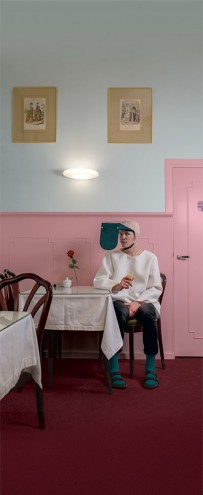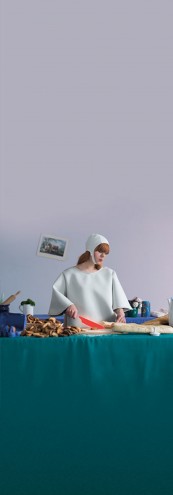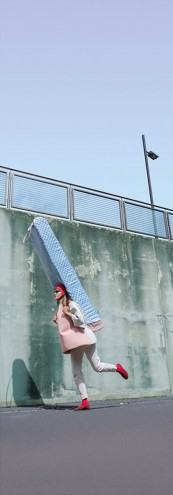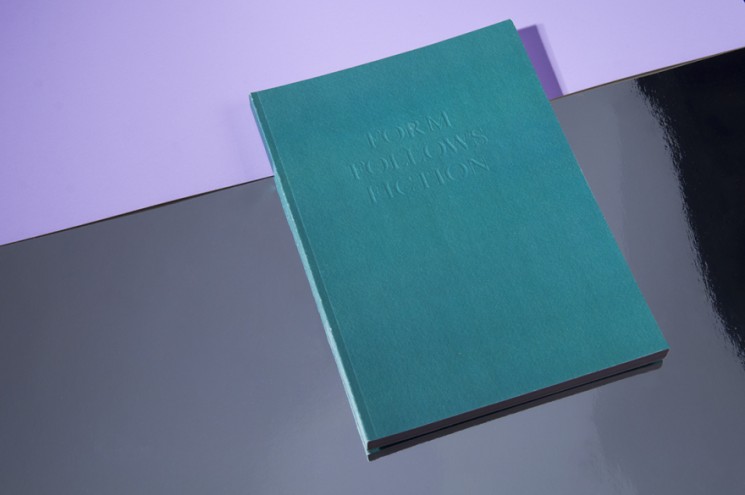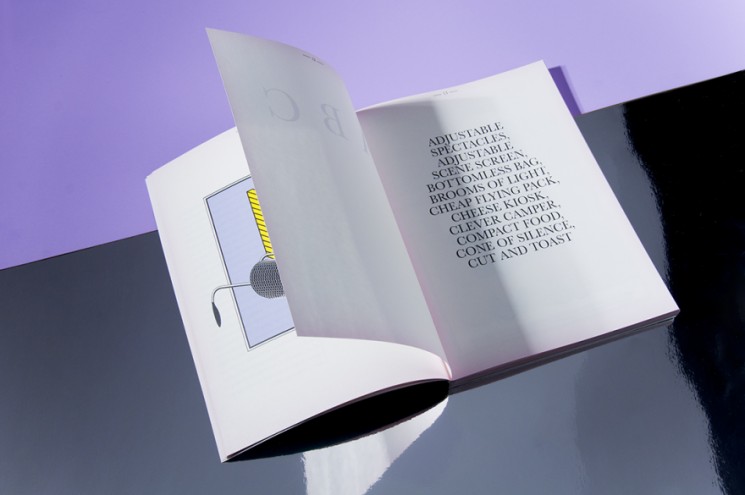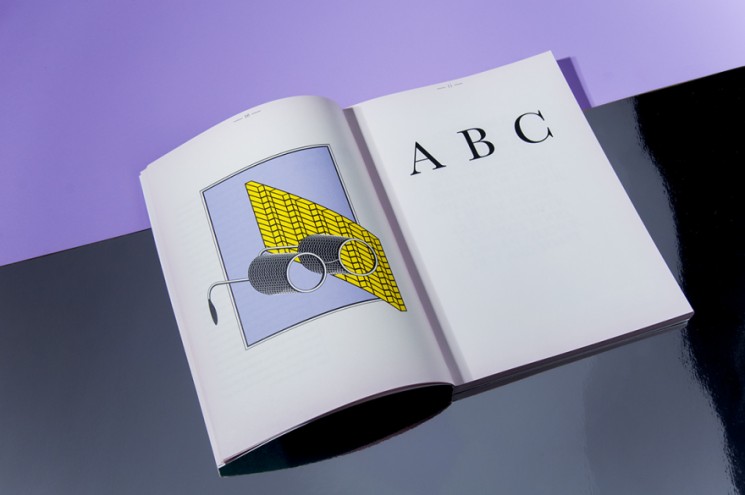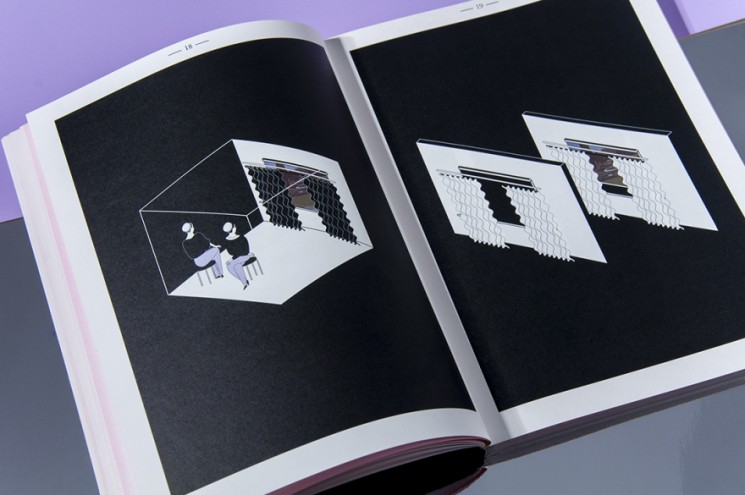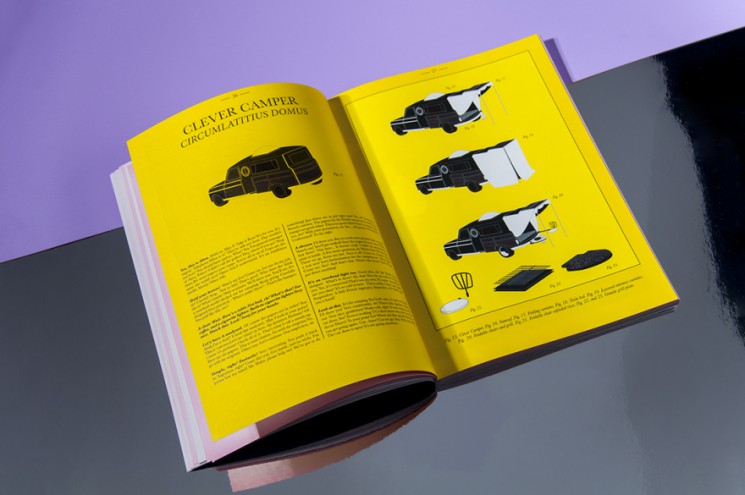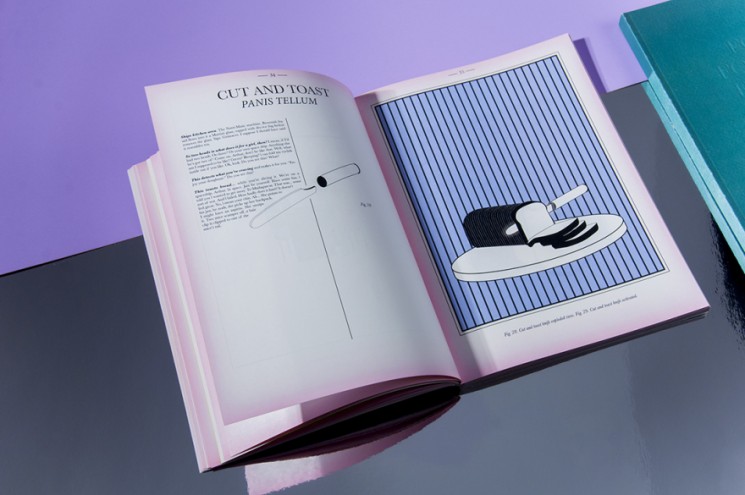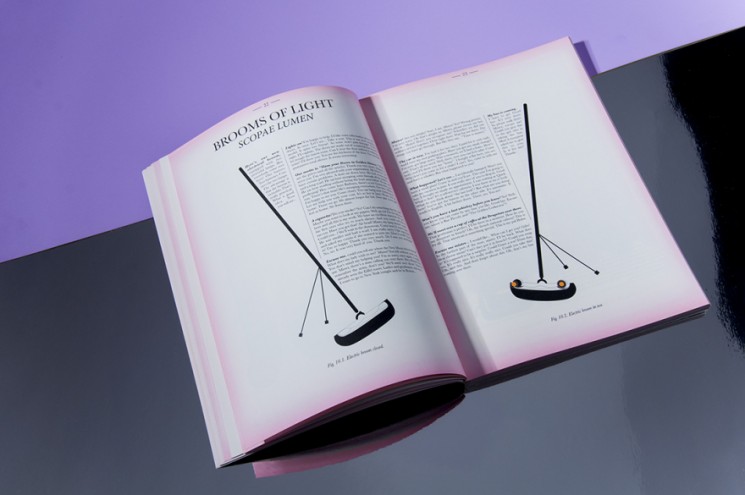From the Series
Design Academy Eindhoven graduate Daniela Treija has given a tangible form to fictional designs and inventions found in books such as The Hitchhikers Guide to the Galaxy, Mary Poppins, and the 1985 French-produced film, Brazil, starring Robert DeNiro.
The Latvian-born multidisciplinary designer is driven by the desire to “get acquainted with the bizarre, the absurd and the unknown”. Treija’s graduation project, Form Follows Fiction, takes to heart the saying that “anything one man can imagine, another man can make real”. Her inspirational guidebook Form follows Fiction sketches a total of 83 designs, which translate fictional designs into the real world
Designs from the world of fiction are not inhibited by the constraints of the real world, so we interview the young designer to find out what challenges she faced while making fictional inventions real.
What inspired the project?
The project started with an interest in how fictional narratives have continuously invaded and shaped our reality, thus expanding our social aspirations, our norms and understanding of things.
While doing my research on how fictional elements and stories have real-life impacts, I came across a term called “ design fiction”. Design fiction is a practice used as a guideline for possible future scenarios and design ideas, assuming that every fictional artefact – literary or cinematic – has the potential to become a valid design idea and the cornerstone for further speculations. It is using narrative elements to envision new possibilities within the field of design.
This was what moved me to wonder how many unique and fictional designs and functions I could find within literature and film. And what would happen if these designs, which have lived only in imagination and fantasy, could take a tangible shape in the physical world.
What other designs can we expect to see in your project?
After my expedition through many, films and books I collected over 60 different design pieces that can only be found in works of fiction. I gathered them all in a sort of “ encyclopaedia of imaginary designs” – a reference manual on how to use fiction in reality. In this encyclopaedia, you can find everything from the logical and functional to the totally absurd, from fashion to a praying booth and from interior elements to James Bond gadgets.
Apart from the three pieces I visualised in “real world” – the personal room divider, the bottomless bag and cut and toast knife – my book contains other designs such as brooms with embedded lamps, in order to help you see when cleaning under your bed, for example. Or a portable glass holder that can be put on the ground designed especially for garden parties. There are many other humorous and genius ideas that are waiting to be turned into to real life designs.
What challenges did you face bringing designs from books into the "real world"?
I found that many of these design pieces found in fiction couldn’t really exist in reality, no matter what. Especially many of the ones I found in science fiction movies and children books. The bottomless bag from Mary Poppins is a sort of "magical bag" that can carry any size or shape object. Any! And when I made my interpretation of it, I just used the principal of having a massive, almost never ending backpack. The backpack I made is only 2,50m tall, unfortunately.
Which design is your favourite and in which book was it found?
It’s hard to distinguish my absolute favourite. It depends, if you look at it from a functional perspective or just because it’s kind of funky. I remember watching the Get Smart a series from 1965 that satirized the whole secret agent genre. I still think that The Cone of Silence that was used for Agent Smart and his boss to have secret conversations under is absolutely fantastic. But if I need to think practically – I would still go for the Marry Poppins backpack. I can actually see myself using it.
“Form Follows Fiction” will be published later this year – we’ll keep you posted. Design Academy Eindhoven’s annual graduate show will be hosted from 17 to 25 October.

